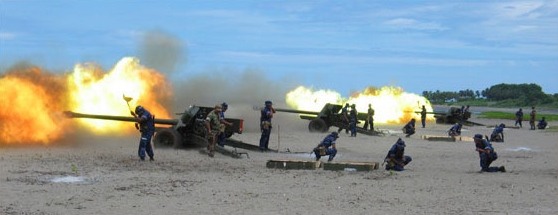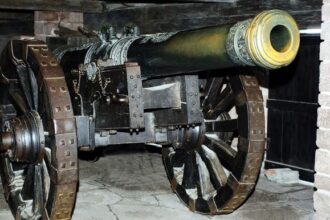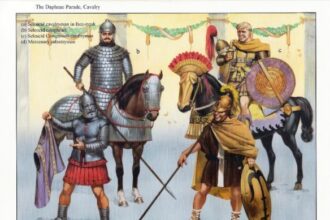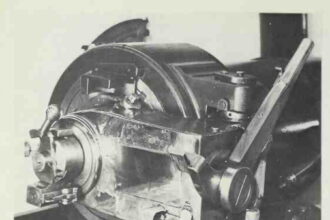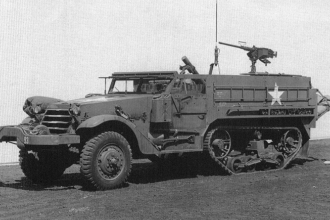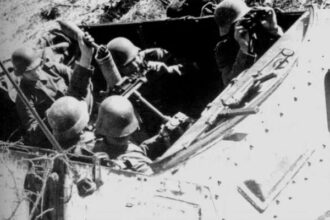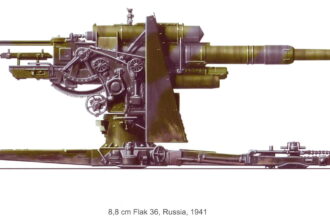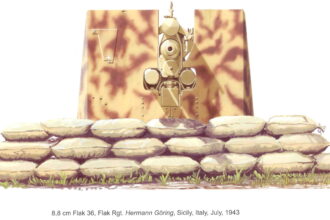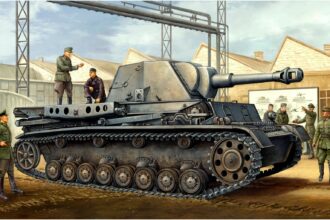Newsletter
Get the latest from Weapons and Warfare right to your inbox.
Follow Us
Explore
Artillery
100mm Field Gun M1944 (BS-3)
Beginning in 1932 with the 45mm M1932 and the 45mm M1937, the Soviet Union followed the same path of calibre escalation. Adopted in 1942, the 45mm M42 was essentially a larger-bore copy of the German 37mm antitank gun. The M42 was quickly superseded in 1943 by the more potent calibre 57mm ZIS-2. The excellent ZIS-2 was, in turn, superseded in…
Most Recent
Breech-Loading Heavy Guns at Sea
Ordnance experiments in the 1870s involving testing pressures in gun bores revealed that performance could be significantly enhanced by utilizing slower-burning gunpowder and longer barrels. Slow-burning large-grain powder, known as prismatic powder, prolonged the length of time that the charge acted on the projectile and thus increased both muzzle velocity…
Self-Propelled Mortar Carriers I
M21 81mm Mortar Carrier at tests Half-track carriers were one of the most versatile designs of all armoured fighting vehicles to be used during the Second World War. The Japanese Army had this type of vehicle, as did the French Army, but it was the German and American armies which…
Self-Propelled Mortar Carriers II
SdKfz 251/2 Mortar Carrier The SdKfz 251 was developed into a range of different purposes, from ambulance duties to anti-tank roles. By late 1944, around 16,000 vehicles had been built to serve in no fewer than twenty-three different roles. Depending on the role, each version had a different length of…
8.8-cm FlaK 18 and Flak 36 Part I
Although initially hampered by the restrictions imposed by the Versailles Treaty, Germany rapidly developed a system of highly effective antiaircraft weapons. An early attempt, adopted in 1928, the 75mm FlaK 38 fired a 14-pound shell to a maximum ceiling of 37,730 feet. In the decade following World War I, Krupp…
8.8-cm FlaK 18 and Flak 36 Part II
France also adopted 88s abandoned once the Germans had left France, sending numbers of FlaK guns to be used in their post-war Indo-China campaigns along with an array of ex-Second World War (and even First World War) artillery relics, including former Japanese artillery pieces. The French 88s had nothing to…
Heuschrecke
The development of SP artillery had been envisioned as early as 1934, but by 1935 attention had turned to a tank with a 105mm howitzer. Thus, it was not until early 1940 that approval was given for development of a true SP artillery piece. In January 1942 Krupp showed a…
Most Popular
Artillery of the Middle Ages
The earliest written evidence for the cannon is found in the ordinances of Florence for…
IMPERIAL RUSSIAN ARMY – RUSSO–JAPANESE WAR
On the eve of the Russo–Japanese War, Russian land forces were the biggest in the…
American Civil War Rail-Weapons
From the very beginning of the war, the employment of railway batteries in the form…
French Artillery – Napoleonic Wars III
The artillery of the Imperial Guard, which grew into the Grande Armée’s artillery reserve, had…
